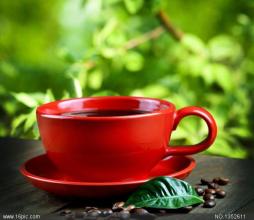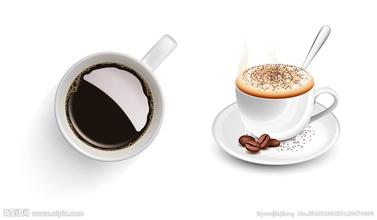Panamanian Coffee with Fruit flavor introduction to Esmeralda Manor Coffee Flavor
The overall economy is at a low level of development, agriculture, forestry and fisheries account for the majority of people's livelihood, but shipping-related enterprises and part of the financial and insurance industry have international status, resulting in a small number of super-rich class, a large gap between the rich and the poor. Panama is rich in forest resources and has many tropical tree species. Mahogany, cedar, teak and other timber are abundant in the east, providing a small number of internationally competitive exports. Farmers live on tropical cash crops such as bananas, pineapples, sugar cane and coffee. The industrial foundation is weak, there is no heavy industry, and the manufacturing industry is mainly light industries such as agricultural and animal husbandry products processing industry and livelihood products industry, and some low-tech household appliances can be self-made.
Copper and gold deposits are relatively large, currently ranking the sixth largest copper country, with an output value of US $430 million in ore mining in 2013. There are theoretical reserves of oil and natural gas in the eastern rock strata, which has also become the focus of the international energy industry. for ordinary people, if they want to get out of the countryside, they can only go to the city to engage in the service industry, with a service output value of US $25.1 billion, and transportation, warehousing and tourism are major sources of job opportunities. The port of Gelang in Panama (including three terminals such as MIT, CCT and Cristobal) on the Atlantic coast and the ports of Balboa and PSA Panama in Panama on the Pacific coast rank first and second in container traffic among the major ports in Central and South America. In the first quarter of fiscal year 2014, the tonnage of the Panama Canal reached a record high of 87.7 million tons in a single quarter.
Workers with a higher level of knowledge can choose higher-end banking and insurance in the service industry. Panama is firmly in the position of a regional financial center in Central America and the Caribbean, with total assets of US $97.925 billion.
The tourism industry has made rapid progress since 2010, and the government has also stepped up tourism construction. In 2013, the World Economic Forum ranked 37th among 140 countries and regions and fourth in the Americas. The continuous investment in the hotel industry and the holding of international trade fairs have become the key support targets of the government. The Nicaraguan Canal is bound to have an impact on Panama after it is opened in the future. The government intends to invest in strengthening the capacity of business reception and financial services to meet the challenge.
The microclimate in the Poquet Heights of Panama is a unique and important resource for boutique coffee in the Pokuit region. This is the Panamanian environment from east to west, which allows cold air to converge above 6500 feet through the Central Mountains, thus creating a variety of microclimates in the Pokuit region, making its temperature and rainfall very suitable for plant growth. so the coffee trees grown here are in very good condition, so in the land of Pokuit, there is a bean with a very high performance-to-price ratio. And it has a very beautiful name-Flower Butterfly. She has 40% high-quality Rosa pedigree, which is composed of Rosa, Kaddura and Kaduai. It is planted in the Baru volcano region of Pokut and grows in the volcanic area at an altitude of 1600 meters. The treatment plant uses fine washing treatment. Panama's special local microclimate leads to abundant rainfall in this area, and a large temperature difference between day and night, coupled with the unique volcanic rock and soil of the volcanic area, as well as meticulous harvesting and fine treatment. Make this coffee excellent in thickness, acidity and floral aroma. Now there are many ways to wash the coffee, but generally speaking, after picking the coffee fruit, remove the floating beans, then remove the pulp, and then soak the coffee beans in the fermentation tank. The enzymes in the water will soften the mucus attached to the peel of the coffee beans, and the natural yeast will decompose the sugar in the mucus. This process is called fermentation. After the fermentation is completed, move the coffee beans to the sun field to dry. In the process of drying, you need to constantly turn the coffee beans to ensure the uniformity of the drying. Finally, the shell is kept in the warehouse, and some raw bean merchants place an order before shelling and bagging. The processed coffee tastes clean, emphasizing the bright and lively acidity, as well as the clear fruit flavor and flower aroma. In 1931, it was exported to Kenya in obscurity from the Mount Geisha Mountain in southwestern Ethiopia (which happens to be synonymous with Japanese geisha), wandered around Tanzania and Costa Rica, and was transplanted to Panama in the 1960s, before it became a blockbuster for nearly half a century. Beat the victorious Bourbon, Kaddura, Kaduai, Tibica and other varieties to win the first prize of the Panama National Treasure Bean Cup Test Competition in 2005, 2006 and 2007. In 2007, the International famous Bean Cup Test sponsored by the American Fine Coffee Association (SCAA) won the championship again, and the bidding price was sold at US $130 per pound, setting a record for the highest price in the history of competition beans. It is reported that the later Panamanian national treasure bean competition will be divided into two groups: Rose Summer and non-Rose Summer, so as not to be robbed of the brilliance of other varieties by Rose Summer. Rosa is a member of the Tibika family, but it became famous more than 70 years after leaving Ethiopia, and fulfilled the saying that Ethiopia is a treasure trove of Arabica genes. Giving a variety to go abroad is enough to stir up trouble in the coffee market.

Important Notice :
前街咖啡 FrontStreet Coffee has moved to new addredd:
FrontStreet Coffee Address: 315,Donghua East Road,GuangZhou
Tel:020 38364473
- Prev

Introduction to fine coffee with mellow taste and flavor characteristics of Costa Rican Saint Roman Manor Coffee
From 1870 to 1882, T. Guardia Gutierrez exercised dictatorship, weakening the power of the two families. Since the 1970s, British and American capital has infiltrated. American entrepreneur M.C. Keith signed a contract with the Costa Rican government to build a railway from Port Limon to San Jose on the east coast, won a concession in 1999 and occupied large tracts of land to develop banana plantations in 1855-1857, Molapo.
- Next

An introduction to the characteristics of coffee flavor in Lazmus Manor, Colombia, with a smooth taste.
In his letter from Jamaica in 1815, Bolivar envisioned that when South America was liberated from Spanish colonial rule, New Granada and Venezuela should form a country, named Colombia. In August 1819, Bolivar's Patriotic Army defeated the Spanish colonial army at the Battle of Boyaca and liberated Bogota. So, New Granada and Venezuela
Related
- Does Rose Summer choose Blue, Green or Red? Detailed explanation of Rose Summer Coffee plots and Classification in Panamanian Jade Manor
- What is the difference between the origin, producing area, processing plant, cooperative and manor of coffee beans?
- How fine does the espresso powder fit? how to grind the espresso?
- Sca coffee roasting degree color card coffee roasting degree 8 roasting color values what do you mean?
- The practice of lattes: how to make lattes at home
- Introduction to Indonesian Fine Coffee beans-- Java Coffee producing area of Indonesian Arabica Coffee
- How much will the flavor of light and medium roasted rose summer be expressed? What baking level is rose summer suitable for?
- Introduction to the characteristics of washing, sun-drying or wet-planing coffee commonly used in Mantenin, Indonesia
- Price characteristics of Arabica Coffee Bean Starbucks introduction to Manning Coffee Bean Taste producing area Variety Manor
- What is the authentic Yega flavor? What are the flavor characteristics of the really excellent Yejasuffi coffee beans?

